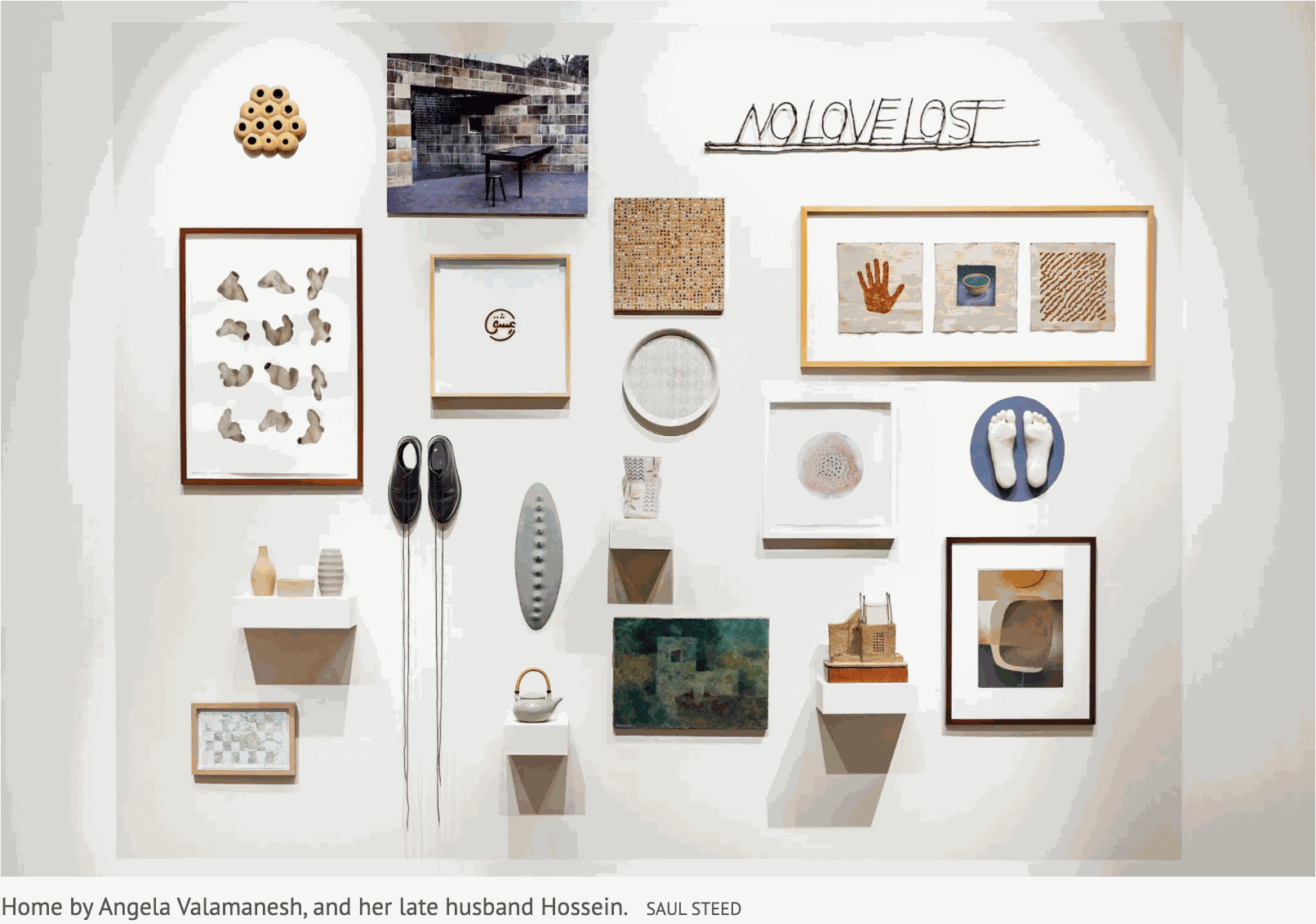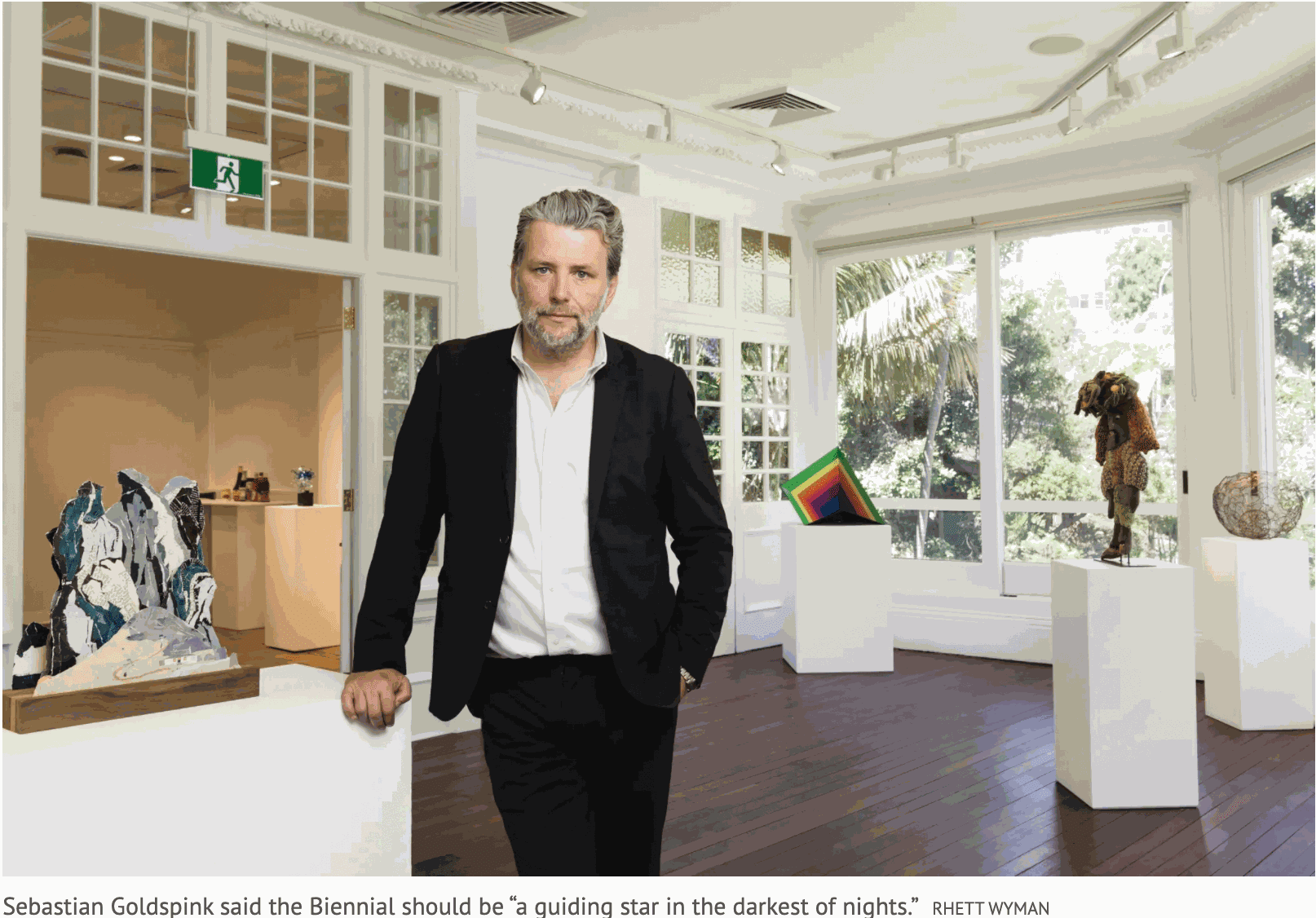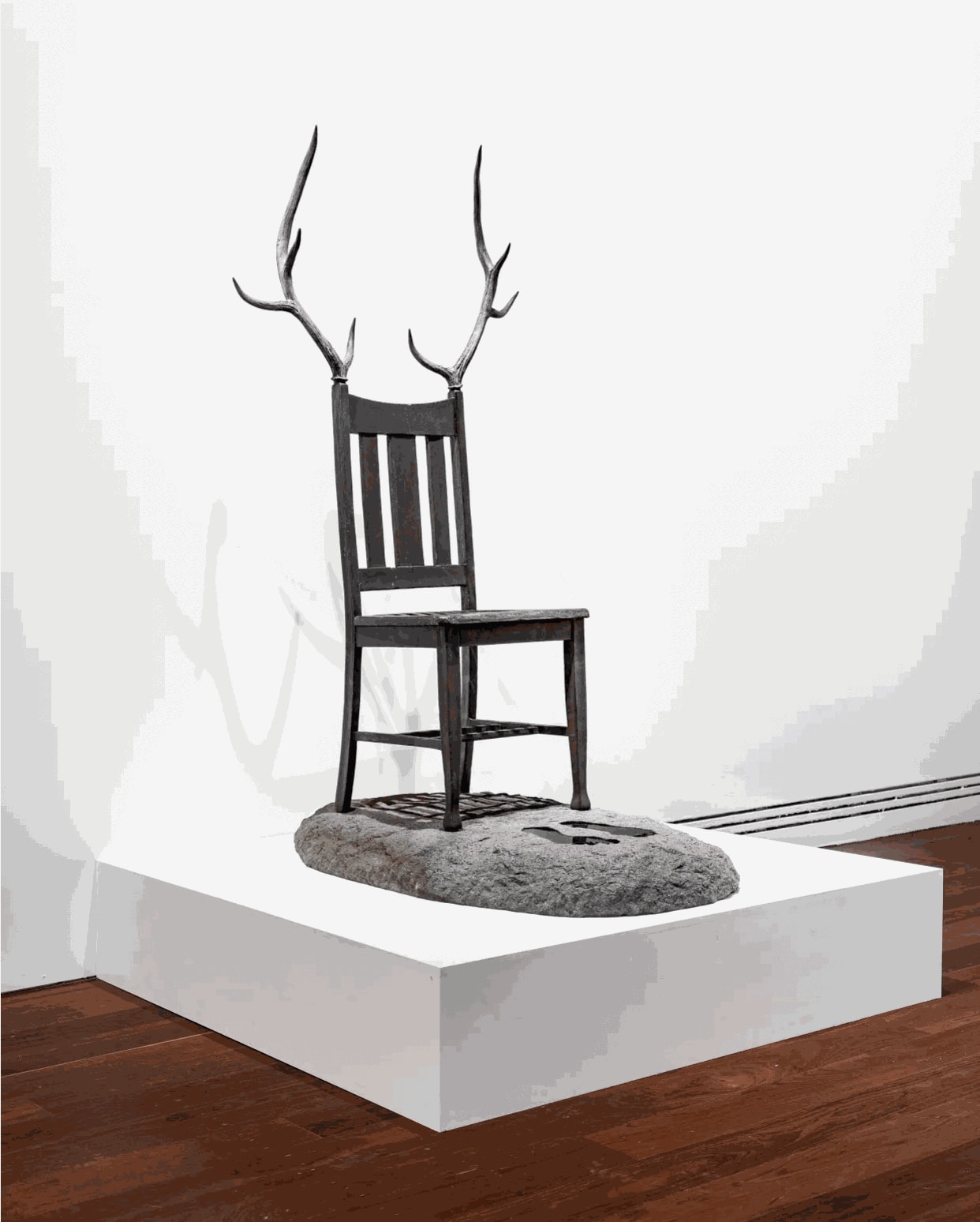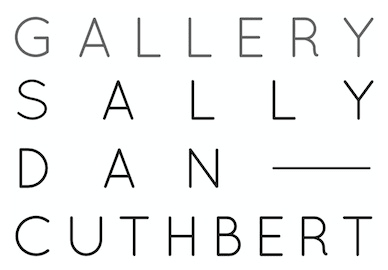
Sebastian Goldspink is pioneering a new model of curatorship – the sensitive, caring custodian. At the opening of this year’s Adelaide Biennial of Australian Art at the Art Gallery of South Australia, Goldspink seemed to waver on the brink of tears every time he made a speech, which, as guest curator, was pretty frequently. At no stage did he show a trace of cynicism. For Goldspink, the Adelaide Biennial represents a big step up from his usual activities as an independent curator best known for his work with the Sydney artist-run space, Alaska Projects. The AGSA has brought him on board to identify a new crop of emerging artists and the shape of Australian art in a post-pandemic world. To this end he’s been conscientious, putting the needs of artists ahead of any personal agenda. He’s been willing to include older artists, making it a “trans-generational” show. He’s paid his respects to the South Australian context, the theme of the exhibition serving as a reminder of the state’s origins as a settler colony, not a prison camp. He’s been exceptionally attentive to Indigenous issues. These are the positives of this 17th Adelaide Biennial but don’t expect any sweeping revelations. Goldspink writes: “This Biennial takes the position that, in times of crisis, the most radical and impactful position an artist can assume is to act idiosyncratically, to hold their course. To be a guiding star in the darkest of nights.”

This is a terribly romantic way of saying: “Anything goes”. The “idiosyncratic” approach may be a fair reflection of the confused, pluralistic state of contemporary art, but it doesn’t guarantee memorable works. Free/State is the usual blend of the good, the bad and the cryptic. It just feels a bit more sincere this time. It has been difficult to pull a Biennial together during a pandemic, but the launch was overshadowed by two last-minute tragedies. First was the sudden death of Hossein Valamanesh, who along with his wife, Angela, is one of the senior participants in the exhibition. Next came the accidental death of Neil Balnaves, whose Foundation is the Biennial’s Principal Donor.
Neil Balnaves was, quite simply, one of Australia’s great art patrons – a forthright personality who took a hands-on interest in the events he sponsored. Many galleries and exhibitions – along with other good causes – have benefited from his generosity. In this country genuine philanthropists are rare, and with Balnaves’ demise, rarer still. In Hossein Valamanesh, we have lost one of Australia’s most versatile and respected artists, a figure who successfully integrated his Iranian heritage with the culture of an adopted homeland where he would spend almost five decades. He and Angela’s contribution to this Biennial was conceived as a compact survey of their careers as solo artists and collaborators.

Guardian, part of Angela and Hossein Valamenesh’s joint exhibition at the Art Gallery of South Australia.CREDIT:SAUL STEED
The Valamaneshes’ display is a show-within-a-show, including early work and some of their most recent. It starts with small, relatively modest pieces and expands in a dozen different directions. Hossein would make sculptures, wall pieces, kinetic works, films, and large-scale installations, each with its particular poetry. Angela begins as a potter and goes on to create large, biomorphic ceramic sculptures. Together the couple have created a significant body of public art.
The Valamanesh rooms would have been a highlight of the exhibition under any circumstances but have now taken on an elegiac dimension. They serve as the unofficial heart of this Biennial. Another work that has assumed an exaggerated significance is Stanislava Pinchuk’s The Wine Dark Sea (2021): an installation of smooth, coloured marble blocks, inscribed with quotations from The Odyssey and lines from reports about Australia’s offshore detention centres.


